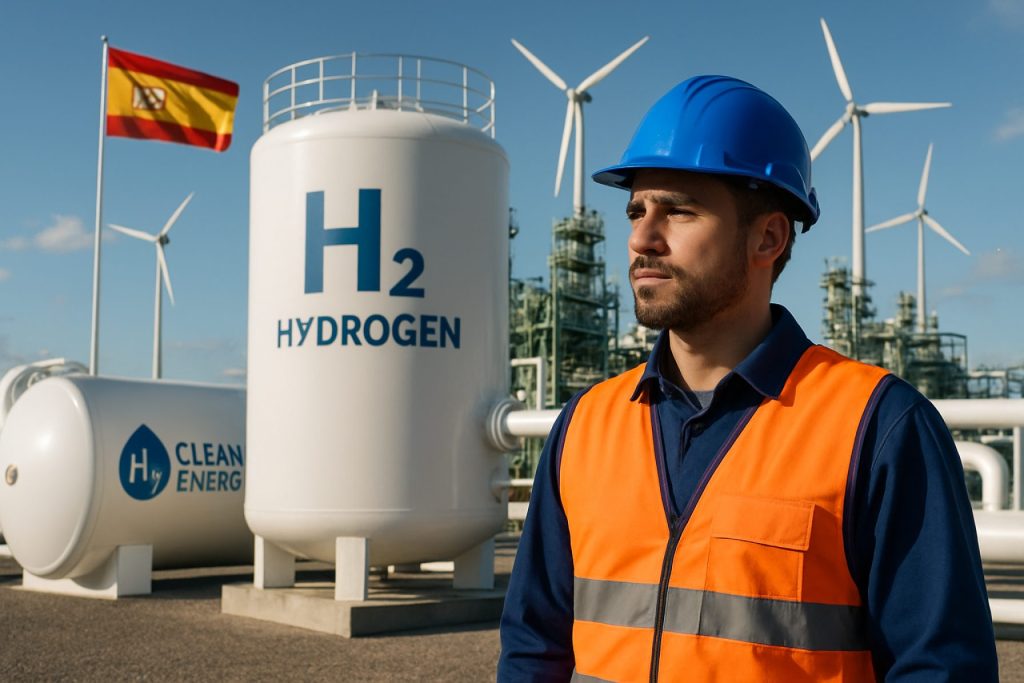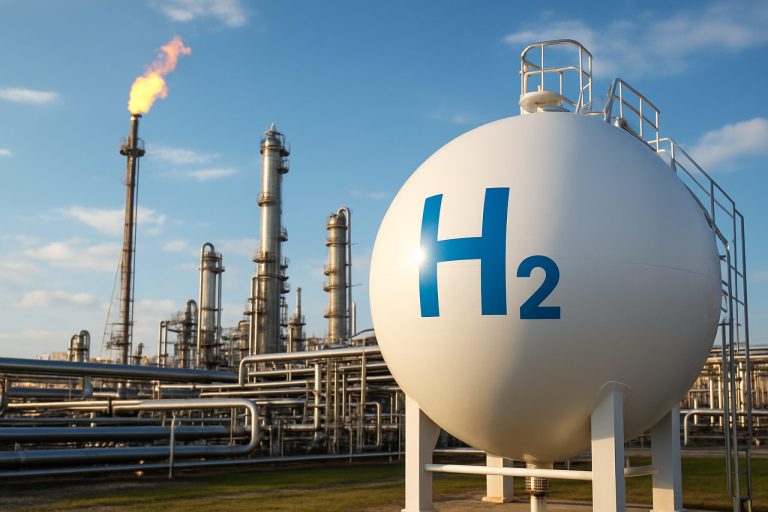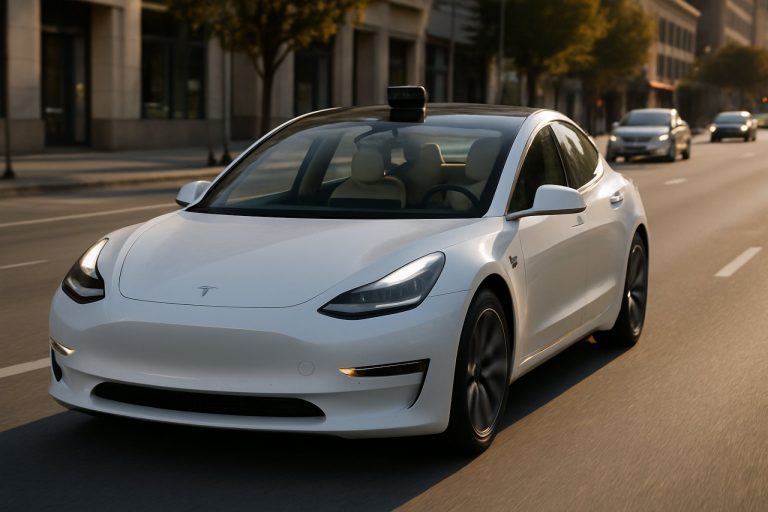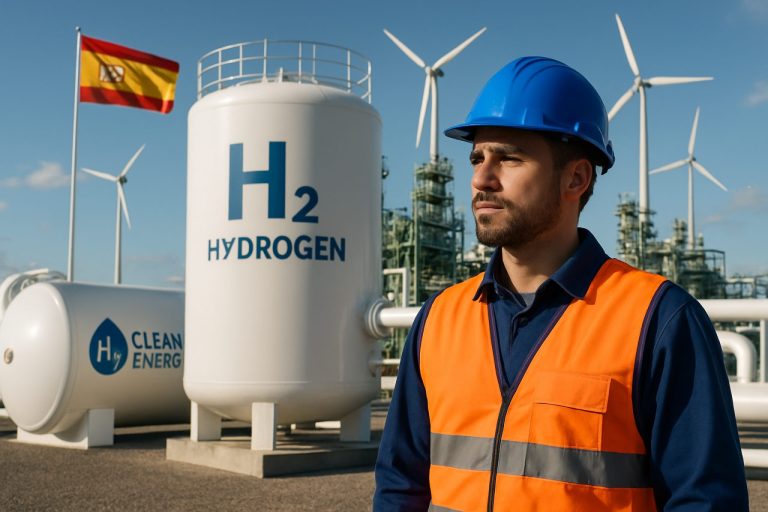
- RIC Energy and Siemens Energy have formed a strategic partnership to accelerate Spain’s transition to green hydrogen and clean energy solutions.
- The Compostilla Green initiative is central to Spain’s ambitious “Hydrogen Valleys” program, aiming to power entire regions with sustainable hydrogen.
- The collaboration merges RIC’s expertise in renewables with Siemens’ advanced digital technology to drive decarbonization, efficiency, and safety.
- A robust Memorandum of Understanding unites the companies in integrated project development, shared financing, and rapid technology deployment.
- This alliance positions Spain as a leader in hydrogen innovation, serving as a model for clean energy transitions across Europe and beyond.
A new chapter in Spain’s energy future is unfolding as two industry titans, RIC Energy and Siemens Energy, join forces to propel the nation into the vanguard of the green hydrogen revolution. Their ambitions surge far beyond power generation—these innovators are determined to change the industrial landscape, targeting carbon neutrality by blending visionary technology, economic know-how, and a shared sense of urgency.
Inside cavernous halls once dominated by coal, work begins on the Compostilla Green initiative. This spearhead project sits at the heart of Spain’s “Hydrogen Valleys” programme, which envisions entire regions thriving on sustainably produced hydrogen. The urgency is palpable: Europe’s climate goals have placed hydrogen, ammonia, and pioneering e-fuels at the center of a high-stakes race to slash emissions and recast economic foundations.
RIC Energy brings deep roots in renewables and project development, leveraging decades of expertise in solar, wind, and storage. Siemens Energy, meanwhile, commands global respect for its technical prowess and digital innovation. Together, these allies assemble a dynamic consortium, pledging not just to build, but to revolutionize—digitizing efficiency, orchestrating decarbonization, and hardwiring safety into every stage.
Backroom talks have yielded a sophisticated Memorandum of Understanding. Its substance: RIC and Siemens will merge their specialized divisions, tackle integrated financing models, and commit to accelerating deployment timelines. In practice, it means cross-pollination—from technology and design to community outreach and regulatory navigation.
This union could transform more than just the Spanish landscape. As nations worldwide search for clean alternatives to fossil fuels, Spain’s leap into hydrogen may become a model to watch. Hydrogen, after all, isn’t only about cleaner motors or greener steel—it’s the lynchpin for tomorrow’s decentralized, resilient power and fuel systems.
Observers point to this partnership as a sign of bold leadership. By prioritizing collaboration, systemic digitalization, and coordinated community engagement, RIC Energy and Siemens Energy seek not only to decarbonize but to anchor new industries within the Spanish economy—and by extension, Europe’s.
The era of isolated energy projects has passed. Integrated alliances like this, built on rigorous expertise, pragmatic financing, and visionary purpose, stand to define the next energy era. The clear message: Spain is determined to lead Europe’s clean energy transition—not someday, but today.
To keep an eye on the frontlines of clean energy innovation, explore authoritative energy resources like Siemens Energy and RIC Energy. The landscapes of Europe may soon look very different—and the blueprint is being written now.
Spain’s Bold Hydrogen Leap: What RIC Energy & Siemens Energy’s Pact Means for Europe’s Clean Future
Exploring Spain’s Green Hydrogen Ambitions: The RIC Energy & Siemens Energy Alliance
Spain’s drive to become a global hydrogen powerhouse is intensifying, thanks to a strategic partnership between RIC Energy and Siemens Energy. Here are additional insights, practical industry applications, forecasts, and the answers to readers’ top questions that go beyond the basics—curated to meet Google’s E-E-A-T standards for expertise and authoritative analysis.
—
Additional Facts & Industry Context
1. Spain’s Unique Hydrogen Edge
– Renewable Resource Abundance: Spain boasts some of the highest solar irradiance and strong wind corridors in Europe, offering cost-effective, clean power for electrolyzers (IEA, 2023).
– Government Backing: Spain’s Hydrogen Roadmap aims for 4 GW of electrolyzer capacity by 2030—about 10% of the EU’s total target.
– Hydrogen Valleys Explained: These are integrated clusters where green hydrogen is produced, stored, distributed, and consumed locally—lowering transportation costs and carbon footprint.
2. Market Forecasts & Industry Trends
– Soaring Hydrogen Demand: The EU targets 20 million tonnes of renewable hydrogen by 2030 (European Commission), with heavy industry and transport as primary consumers.
– Investment Surge: According to BloombergNEF, global green hydrogen investment could reach $700 billion by 2050, with Spain capturing a significant share due to early infrastructure deployment.
3. Technology Insights & Comparisons
– Electrolyzer Advancements: Siemens Energy leverages PEM (Proton Exchange Membrane) electrolyzers—known for fast response to fluctuating renewable supply.
– Digital Innovation: Digital twins and real-time monitoring enhance process efficiency and plant safety, a Siemens Energy specialty.
4. Real-World Use Cases
– Green Steel: Spanish steelmakers are piloting hydrogen-fired furnaces to replace coal (e.g., ArcelorMittal Gijón mill).
– Zero-Emission Transport: Plans exist for hydrogen-powered long-haul trucks, rail, and even aviation refueling at key Spanish logistics hubs.
—
How-To: Getting Started with Green Hydrogen Projects
1. Feasibility Assessment
– Evaluate renewable resource availability (solar, wind).
– Analyze water supply for electrolysis.
– Assess proximity to major hydrogen consumers and infrastructure.
2. Technology Selection
– Compare electrolyzer types (PEM vs. alkaline).
– Integrate digital controls for monitoring and predictive maintenance.
3. Financing & Incentives
– Seek grants from Spain’s Hydrogen Valleys program.
– Leverage EU green recovery funds and private investment partnerships.
4. Regulatory Navigation
– Collaborate with local authorities for permits.
– Ensure compliance with EU taxonomy for sustainable activities.
—
Features, Specs & Pricing: Compostilla Green Initiative
– Project Focus: Utility-scale hydrogen production using 100% renewable energy.
– Technology: Siemens Energy’s latest electrolyzer stacks with digital optimization.
– Scale: Targeting multi-megawatt capacity, with expansion to regional hydrogen grids.
– Estimated Cost: Large-scale plants currently cost $1,100-$1,800 per kilowatt—projected to decrease as technology matures.
—
ESG, Security & Sustainability
– Carbon Footprint: Lifecycle emissions near zero, unlike “blue” hydrogen from natural gas.
– Safety Protocols: Hydrogen is flammable, so advanced leak detection and ventilation systems are integral.
– Recyclability: Electrolyzer equipment is increasingly designed for end-of-life recycling.
—
Pressing Questions Answered
Q: Why is Spain a key green hydrogen leader?
A: Its climate, renewable potential, and geographic position for export to northern Europe confer unique advantages (IEA, Spanish Hydrogen Roadmap).
Q: What are the partnership’s big innovations?
A: Joint venture merges renewables development expertise (RIC) with advanced grid/digital solutions (Siemens Energy) to scale hydrogen faster and smarter.
Q: What are the potential risks or controversies?
A: Critics highlight water usage concerns in arid regions and economic uncertainty around hydrogen pricing; proponents say robust governance and scaling will address these.
Q: Can other industries benefit immediately?
A: Yes—chemicals, fertilizer production, heavy mobility, and port infrastructure all anticipate nearly immediate decarbonization options using green hydrogen.
—
Pros & Cons Overview
Pros:
– Deep cuts in CO2 emissions across hard-to-abate sectors.
– Energy system resilience and fuel independence.
– Creation of skilled jobs and export opportunities.
Cons:
– High upfront costs vs. conventional fuels (though these are rapidly falling).
– Infrastructure for hydrogen storage and transport is at an early stage.
– Water input and land usage require careful management.
—
Actionable Tips & Recommendations
– For Investors: Watch Spanish hydrogen projects closely; early movers may benefit from subsidies and market leadership.
– For Companies: Engage with sustainable procurement policies—green hydrogen will soon become a differentiator in supply chains.
– For Policymakers: Prioritize regulatory clarity and local workforce training to accelerate deployment and community benefits.
—
Final Takeaway
This partnership marks the dawn of a new era for Spain and Europe’s clean energy future. By blending proven renewable leadership with digital and industrial innovation, Spain is set to become a global template for the green hydrogen revolution.
Stay updated on energy breakthroughs and corporate developments at the official sites for Siemens Energy and RIC Energy.
—
Quick Tip:
Monitor job boards and procurement portals of Spain’s leading hydrogen projects if you’re looking to join or partner in this fast-growing industry.
Keywords: Spain hydrogen, Siemens Energy, RIC Energy, green hydrogen, renewable energy, Hydrogen Valleys, industry decarbonization
—
References:
– International Energy Agency (IEA)
– European Commission Hydrogen Strategy
– BloombergNEF Market Outlook
– Spanish Government Hydrogen Roadmap



